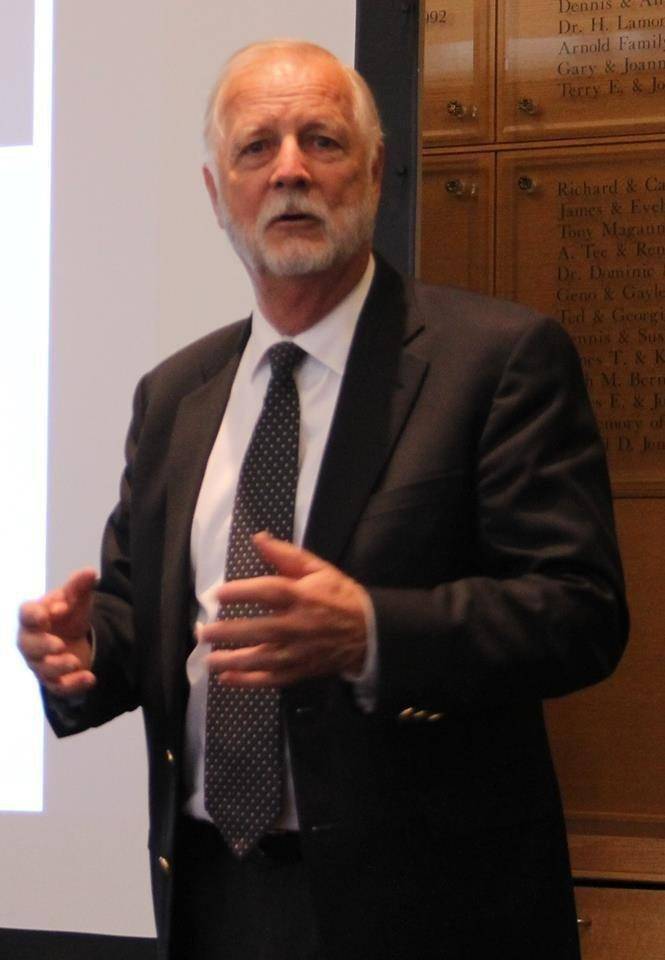Press Release
Andrew Buffmire said he is no scientist.
But he does know a lot of them that know their stuff in his role as the Technology Corporate Ambassador in the office of the Vice President for Research at the University of Utah.
Buffmire spoke at the Business Expansion and Retention general board meeting on November 10. There, he talked about an important research program that will be going on called the Utah Advanced Materials Manufacturing Initiative.
“I want you to know about this grant that the University of Utah has received,” he said. “The work is just beginning and no one can guarantee what it will show. But it is very promising.”
The program was designed to foster regional collaboration in manufacturing communities. He said that 13 federal agencies have partnered together to provide funding and technical assistance for manufacturing. The program is being administered in 24 communities in the United States.
He said that the idea of carbon fiber being developed in Utah started at Hercules, an industry that was located in western Salt Lake County years ago. If it proves out, the concept is to develop an entire supply chain for carbon fiber in Utah. There are many companies in Utah that are using carbon fiber already that could be potential customers for those that would make these materials, including Boeing, Airbus and Lockheed.
“Manufacturing is changing so much,” he said. “It is becoming a completely different animal.”
Carbon fiber is already being used in many products because it provides a material that is not only light, but very, very strong.
He said with the auto industry having to meet new fuel standards in coming years, they need to find lighter materials that are strong to manufacture their vehicles. Right now, making parts using carbon fiber for vehicles is too costly. But, that can change if new research can find ways to bring down the expense of producing it.
“The market is growing and will be $3.3 billion by 2019,” he stated. “Utah has an advantage over other areas because of the kind of coal that comes out of the ground here.”
He said the current suppliers of carbon fiber in the United States is Mitsubishi and Cytec, a company in South Carolina. These carbon fiber materials are manufactured from coal pitch. He said the best thing about Utah coal is that it is low sulfur. Appalachia has coal with 3% sulfur, while Utah coal has .3% sulfur. Sulfur is one of the problems with manufacturing fibers and making them work correctly.
He said the applicants for the grant include the University of Utah, the University of Kentucky, the Utah Manufacturing Association and a consortium of state, local, academics and 60 separate industries. Researchers working on the project are from the U of U, U of K, USU and BYU. He also said the emphasis of the research will be concentrated on Emery and Carbon County coal, something that the U of U researchers that are working on the project already understand pretty well. He said the research that will be done on carbon fiber from Utah coal will be applied research, not basic research.
“The main goal is to identify and implement programs to incentivize manufacturing using the carbon fiber,” he said.
The specific grant proposal includes the evaluation of the present technology, to gather and classify the coal that is mined in Utah, to look at present coking processes, to do the testing at the University of Kentucky (which already has the facilities to do this) and to prepare a plan to characterize coal from other impacted regions.
He also said the U of U already has a clean coal research group, which utilizes a huge furnace to work with local coal in a building in Salt lake.
“The initial work there has concerned chemical looping, and it is a process in which the only thing that that is emitted is CO2,” he said.
At the end of the discussion, he reminded the audience that this process is in the early stage of research and that nothing is certain, but that there is the possibility of great results that could come from the research.
“It is also not an immediate fix as an alternative use of coal,” said Buffmire. “It could be very good over the long term, however.”

